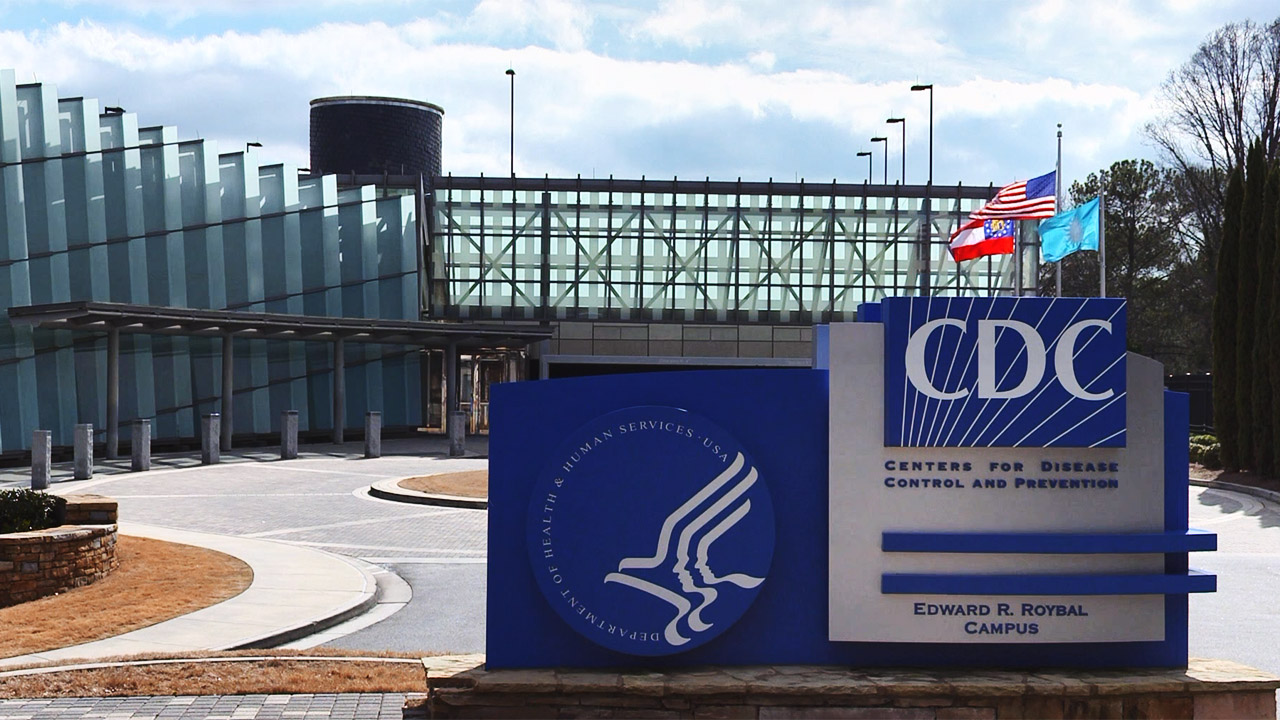Health
House members say AIDS drug program in crisis
Frank, Baldwin sign petition to Obama warning of AIDS deaths

U.S. Reps. Barney Frank (D-Mass.) and Tammy Baldwin (D-Wis.) have joined 76 of their House colleagues to sign a petition to President Obama calling for $126 million in emergency funds for the federal AIDS Drug Assistance Program.
The petition, dated May 19, says the emergency supplemental funds are needed to reverse a growing trend among states to put in place waiting lists for the mostly uninsured patients that rely on ADAP to provide their life-saving AIDS drugs.
“It’s abundantly clear that without emergency action, the ability for ADAP programs to provide a safety net for low income and underinsured Americans with HIV/AIDS will be seriously damaged,” says the petition.
Carl Schmid, deputy executive director of the AIDS Institute, a national AIDS advocacy group, said a coalition of AIDS groups has urged the White House and Congress to boost the federal funding allocation for ADAP for more than a year.
“The ADAP problem is getting worse and worse,” he said. “We’re very concerned that the administration and Democratic leaders in Congress are not responding.”
Schmid and officials with other AIDS groups have said the health care reform legislation that Congress approved earlier this year is expected to lessen the need for ADAP. The reform measure will provide health insurance coverage for millions of Americans, including people with HIV and AIDS, who currently can’t afford it.
The new insurance system will include prescription drug plans that cover the expensive anti-retroviral drugs that have been credited with preventing people with HIV from progressing to full blown AIDS.
But AIDS group officials note that the new program won’t go into full effect until 2014, and more than 1,000 people with HIV who can’t afford the drugs are on ADAP waiting lists in at least 11 states.
That number is expected to increase significantly if Congress doesn’t approve an emergency supplemental funding of $126 million for ADAP this year and another increase of $370 million for fiscal year 2011, according to officials with state AIDS offices.
Congress created ADAP in 1987 as part of the sweeping Ryan White AIDS Care Act. It was intended to provide free or low-cost drugs to people with HIV who have limited financial resources and lack health insurance.
The program is structured so that each state and U.S. territory operates an independent ADAP, with the option of supplementing the program with state funds. Most states have added differing amounts of their own funds to the program.
According to the National Alliance of State & Territorial AIDS Directors, Congress appropriated 72 percent of the total ADAP expenditures in 2000. But by 2009, the federal share of ADAP funding dropped to 51 percent, with state budgets and discounts offered by drug companies picking up the balance.
NASTAD said the decline in the federal share of the funding did not occur due to a reduction in federal funds; federal funds for the program continued to rise at a modest pace. The percentage of federal funds declined because the number of new people enrolling in state ADAP programs increased dramatically over the past decade, in part because the effectiveness of the drugs has kept more people with HIV alive.
Additionally, in recent years, the economic recession has resulted in the loss of jobs along with the loss of health insurance coverage for large numbers of Americans with HIV, AIDS group officials have said.
At the same time, the recession has resulted in a dramatic drop in tax revenue for states, forcing most states to put in place large budget cuts. The cuts have hit state health departments, including state funding for ADAP.
The federal government’s failure to increase its share of ADAP funding to cover the large increase in people with HIV enrolling in the program at the same time that states have slashed their ADAP budgets has been the catalyst for a spike in ADAP waiting lists in a growing number of states.
In one case, AIDS activists have said South Carolina sharply cut its ADAP budget, threatening to prevent hundreds of people with HIV in need of AIDS drugs from receiving them. The cuts could lead to the death of people with HIV who might otherwise remain healthy if they had access to the medication.
Earlier this year, a heated dispute surfaced between NASTAD and the AIDS Healthcare Foundation, a national AIDS advocacy group based in Los Angeles, over whether calls for Congress to appropriate more money for ADAP should be linked to demands that pharmaceutical companies provide greater discounts to ADAP for the purchase of expensive AIDS drugs.
Both groups favor an increase in federal funds for ADAP, and both have said they support efforts to negotiate greater price discounts from drug companies for state programs.
But unlike the AIDS Healthcare Foundation, NASTAD and its allies favor lobbying Congress for increased ADAP funds on a separate track from efforts to secure greater price reductions from the drug companies.
Julie Scofield, NASTAD’s executive director, has argued that a coalition of state programs and various AIDS advocacy groups have succeeded in securing significant drug discounts from major pharmaceutical companies.
In a statement sent by e-mail in March to more than 1,000 groups and activists, AIDS Healthcare Foundation officials said federal intervention alone is not sufficient to curtail the ever-accelerating cost of ADAP spending on drugs.
“The undeniable driver of costs in ADAPs is the costs of the medications that are purchased,” says the statement.
It noted California’s ADAP, in which spending for AIDS drugs increased by 165 percent since 2000, while the number of patients served increased by 49 percent.
“This is equivalent to a 77 percent increase in per patient cost of AIDS drugs,” says the statement. “Even with ‘price freezes’ and rebates, the costs of the pharmaceuticals will continue to rise to a level that will bankrupt states, and force major programmatic concessions in eligibility and formulary.”
Among other things, AIDS Healthcare Foundation proposed that for every dollar of federal funds allocated for ADAP, pharmaceutical firms should be required to “contribute two dollars in additional rebate or price cuts.”
As of earlier this week, neither Congress nor the White House had moved forward any of the proposals for supplementing the ADAP budget through a special, emergency funding allocation for fiscal year 2010.
Sens. Tom Coburn (R-Okla.) and Richard Burr (R-N.C.), however, introduced a bill last month calling for extracting the $126 million advocacy groups say is needed for ADAP this year from federal stimulus money approved under President Obama’s economic stimulus legislation.
The White House and Democratic leaders in Congress have yet to officially take a position on the Coburn-Burr bill, but Capitol Hill observers say they don’t expect the president or most Democrats in the House or Senate to support the measure.
The AIDS Healthcare Foundation has endorsed the bill.
Health
UNAIDS to commemorate Zero Discrimination Day’s 10th anniversary
UN agency urges global action to protect human rights

As the world marks the 10th anniversary of Zero Discrimination Day; UNAIDS is sounding the alarm on the increasing threats to human rights, calling for renewed efforts to protect the rights of all individuals as a fundamental step towards ensuring health for everyone.
Established by UNAIDS a decade ago, Zero Discrimination Day aims to promote equality and fairness regardless of gender, age, sexuality, ethnicity or HIV status. The progress achieved over the past years is now in jeopardy, however, due to rising attacks on the rights of women, LGBTQ people and other marginalized communities.
UNAIDS Executive Director Winnie Byanyima emphasized the critical link between protecting human rights and safeguarding public health.
“The attacks on rights are a threat to freedom and democracy and are harmful to health,” she said in a press release. “Stigma and discrimination obstruct HIV prevention, testing, treatment and care and hold back progress towards ending AIDS by 2030. It is only by protecting everyone’s rights that we can protect everyone’s health.”
Despite challenges, there has been notable progress.
At the onset of the AIDS pandemic more than 40 years ago, two-thirds of countries criminalized consensual same-sex sexual relations. They are now decriminalized in two-thirds of countries. An additional 38 countries around the world have pledged to end HIV-related stigma and discrimination, contributing to positive changes that include 50 million more girls attending school compared to 2015.
To sustain and enhance these advancements; UNAIDS urges global support for women’s rights movements, LGBTQ rights, racial justice, economic justice, climate justice and peace initiatives. By standing with communities advocating for their rights, the U.N. aims to reinforce the collective effort towards a more inclusive and equitable world.
Zero Discrimination Day is observed on March 1.
Events and activities that will take place around the world throughout the month will serve as reminders of the essential lesson and call to action: Protecting everyone’s health is synonymous with protecting everyone’s rights.
“Through upholding rights for all, we will be able to achieve the Sustainable Development Goals and secure a safer, fairer, kinder and happier world — for everyone,” said Byanyima.
Health
New CDC report finds transgender women at higher risk for HIV
More than 1,600 people in seven cities surveyed

The Centers for Disease Control and Prevention issued a new study report this week that revealed that restricted by employment and housing discrimination and lack of access to needed gender-affirming healthcare for transgender women increasing the risk of contracting HIV.
Researchers reviewed data from a 2019-2020 survey, the National HIV Behavioral Surveillance Among Transgender Women, which found that the demographics of HIV/AIDS have been disproportionally high, especially among Black and Latina trans women, who had experienced employment and housing discrimination coupled with lack of access to gender-affirming healthcare.
The Jan. 25 Morbidity and Mortality Weekly Report was based on data studies of more than 1,600 trans women in seven major urban locales. Participants from Atlanta, Los Angeles, New Orleans, New York, Philadelphia, San Francisco and Seattle were chosen by referrals from people and community-based organizations who knew or were part of the local population of trans women.
The study’s researchers noted: “Employment discrimination occurs at the overlapping nexus of poverty, homelessness, incarceration, health insurance, disability, food insecurity and survival sex work. These issues are interconnected.”
The study stated that trans women’s inability to access quality healthcare, including gender-affirming treatment or access to PrEP, and can expose them to potential incarceration as many turn to “survival sex work” and violence, which increases the risk of contracting HIV.
The study’s author’s pointed out: “When economically marginalized transgender women are refused employment, this refusal cyclically contributes to economic hardships. This analysis …demonstrates the importance of transgender women working and living with dignity and without fear of unfair treatment.”
Health
A Whole New Perspective on Well-Being
The Mather’s team recognizes that everyone’s wellness journey is completely unique to their life experiences and influences.

It’s easy to spot the distinctive, elegant silhouette of The Mather, a Life Plan Community for those 62+ opening this spring in Tysons, Virginia. What is not apparent to the naked eye is The Mather’s unique wellness philosophy, which is literally built into the community.
The Mather’s team recognizes that everyone’s wellness journey is completely unique to their life experiences and influences.
Nature is one of the important factors that contribute to well-being. So The Mather is incorporating biophilic design—a design approach to facilitate access to nature or things that replicate natural patterns. This can include interior spaces with sightlines to a garden, choosing natural wood and stone as interior materials, or incorporating fragrant flowers and plants indoors to spark memories and provide tactile opportunities such as gardening.

“Providing biophilic design within interior settings connects residents to the natural world,” says Mary Leary, CEO and President of Mather, the organization behind The Mather. “Research shows that a connection to nature provides positive benefits to mental states and overall well-being. At The Mather, biophilic design is the intersection of buildings and programs with nature in an urban setting.”
“The Mather is attracting a diverse group of older adults,” says Mary. “As a result, we aim to incorporate wellness practices from around the world, including Wyda movement theory of the Celtic Druids, which helps people achieve harmony with nature and contentment through mindfulness.” This holistic regenerative approach is similar to Qi Gong and yoga, while born in a different part of the world. Mather Institute has a special focus on mindfulness to support older adults’ practice of present moment awareness, which can lead to increased overall well-being, compassion, and joy.
A very different example of a wellness offering at The Mather is the Gharieni Welnamis spa wave bed, which uses computer-controlled vibrational therapy and audio frequencies to train the brain to relax. “The bed increases mindfulness, concentration, and creativity—all of which support our mission of creating Ways to Age Well,SM” says Mary.
These and other personalized ways to wellness will ensure that residents of The Mather can choose from seemingly countless ways to focus on their well-being. In other words, the sky’s the limit!
-

 Africa4 days ago
Africa4 days agoCongolese lawmaker introduces anti-homosexuality bill
-

 World4 days ago
World4 days agoOut in the World: LGBTQ news from Europe and Asia
-

 District of Columbia3 days ago
District of Columbia3 days agoReenactment of first gay rights picket at White House set for April 17
-

 Africa3 days ago
Africa3 days agoUgandan activists appeal ruling that upheld Anti-Homosexuality Act











